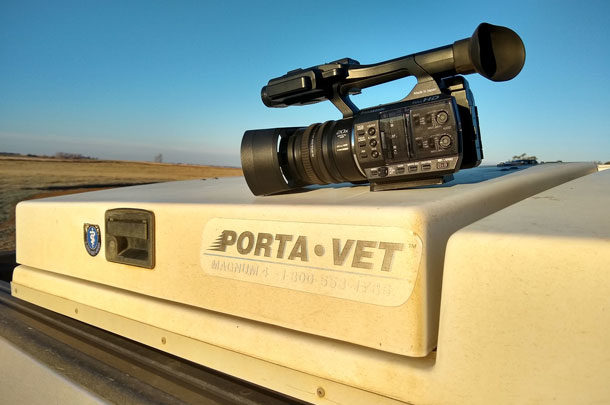Working cattle is a complicated process. You have to get the cattle up and sorted. Then the facility must be in order, with the alley and chute functioning. Add to this that all the products you plan on using on the cattle need to be lined up, with syringes prepared. And, that’s just the prep work.
Then the crew needs to move the cattle through in an orderly fashion, when let’s face it, cattle can decide orderly isn’t in the cards for the day. This assumes your crew knows what it’s doing, and Great Uncle So-and-So doesn’t try to run the show from the sidelines. So, with all these moving parts that may not be flowing in the same direction, who on earth would want to try filming videos while working cattle?
Yet, I tried last September. For work, I have a video series entitled Chuteside with Doc Jake that covers a number of topics of interest to cattle producers. And, when a neighbor said he really enjoys the videos that feature cattle being worked, I thought I’d make a point of doing more of them. Shouldn’t be too hard, right?
To decrease the number of variables, I stuck with filming my own herd. Sure, there’s a lot of great herds out there and better facilities, but it’s a hard sell to most folks. Why would someone want to slow the process down to get a little footage? Also, using my own cattle meant I was at a place where I knew most of the negative variables. Better to bare the ills we have than to fly to others we know not of.
So, the day came to film videos. We were doing two very simple things – giving two pre-weaning shots to the calves and ultrasounding the bred heifers. Those heifers would receive one shot if they were bred. Also, we would record weights on each animal. A simple job, so talking while working cattle, with someone else doing the filming, should be a breeze, I thought.
Well, let’s say that while I can walk and chew gum, giving shots and making a coherent video presentation is not as simple as I assumed. Even on a topic I knew innately (Beef Quality Assurance protocols, in this case) I stumbled over what I needed to say next. But, that wasn’t the worst part; I had a tough time remembering to record the calf weight on the scale. While my cameraman caught me for most of them, I let one out of the chute before I hit the button. I don’t know her number, but she weighed 435 pounds.
After fumbling my way through that video, it came time to ultrasound the heifers. At this point, I made an executive decision to just get the footage and voice over the narration. Missing a weight was one thing, missing a bred was another. This process went far more smoothly. On another note, the heifers bred up very nicely with 24 out of 24 pregnant – a good day.
For my last video capture, I needed to do a how-to clip on giving a bolus medication or magnet. By now, the wind had picked up. We fiddled with the gain on the microphone so the wind noise was bearable, then set the equipment on the table to take the “items you will need” shot.
The wind kept blowing my bolus off the table. I’d set it down and try to say my line, but it would slip away in the wind, like the perfect comeback Uncle So-and-So does when you’re really tired of his shenanigans, alas.
The good news is the final video product looks halfway decent. Decent enough that I’ll try to do it again. Only this time, we’ll just grab a few head and pretend we’re working cattle.
Jacob Geis is a veterinarian and blogger in Freeman, South Dakota.







